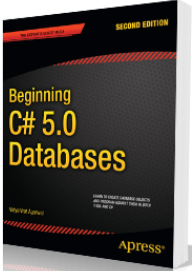Language-Integrated Query (LINQ) is an innovation which Microsoft made with the release of Visual Studio 2008 and the .NET Framework version 3.5 that promises to revolutionize the way that developers has been working with data before the release of .NET 3.5 having LINQ feature. LINQ introduces the standard and unified concept of querying various types of data sources falling in the range of relational database, XML documents or even in-memory data structures.
LINQ offers the following advantages:
- LINQ unifies and offers the common syntax for querying any type of data source for example, you can query an XML document in the same way as you query a SQL database, an ADO.NET Dataset, an in-memory collection, or any other remote or local data source that you have chosen to get connected and accessed by using LINQ
• LINQ bridges the gap and strengthens the connection between relational data and the object-oriented world.
• LINQ speeds development time by catching many errors at compile time and have intellisense and debugging support.
• LINQ query expressions (unlike a traditional SQL statement) are strongly typed.
Core LINQ Assemblies
—————————————————————————-
Assembly Name ———————|————————Description
————————————————————————–
System.LINQ (Provides classes and interfaces that supports Language-Integrated Query (LINQ) queries.
System.Collections.Generic(Allows users to create strongly typed collections that provide better type safety and performance than non-generic strongly typed collections
System.Data.LINQ(Provides the functionality to use LINQ to access the relational database.
System.XML.LINQ(Provides functionality for accessing XML documents using LINQ)
System.Data.Linq.Mapping(Designates a class as an entity class associated with a database)




 I am a hands-on architect with proven 19+ years of experience in architecting, designing, and developing distributed software solutions for large enterprises. At Microsoft, as a Principal Software Engineering Manager, I own the Platform team. I see software development as a craft, and I am a big proponent of software architecture and clean code discipline-n-practices. I like to see the bigger picture and make a broader impact. I was also a Microsoft MVP for past 7 years on Visual Studio and Dev Technologies I can be reached at vidya_mct@yahoo.com or twitter @dotnetauthor
I am a hands-on architect with proven 19+ years of experience in architecting, designing, and developing distributed software solutions for large enterprises. At Microsoft, as a Principal Software Engineering Manager, I own the Platform team. I see software development as a craft, and I am a big proponent of software architecture and clean code discipline-n-practices. I like to see the bigger picture and make a broader impact. I was also a Microsoft MVP for past 7 years on Visual Studio and Dev Technologies I can be reached at vidya_mct@yahoo.com or twitter @dotnetauthor




Leave a Reply